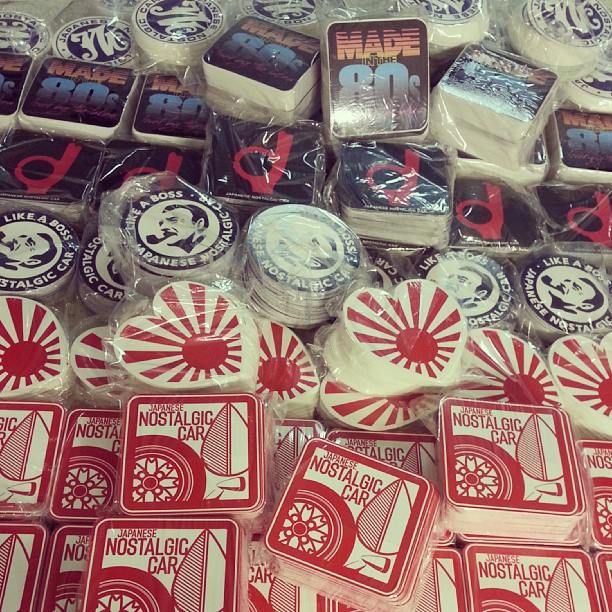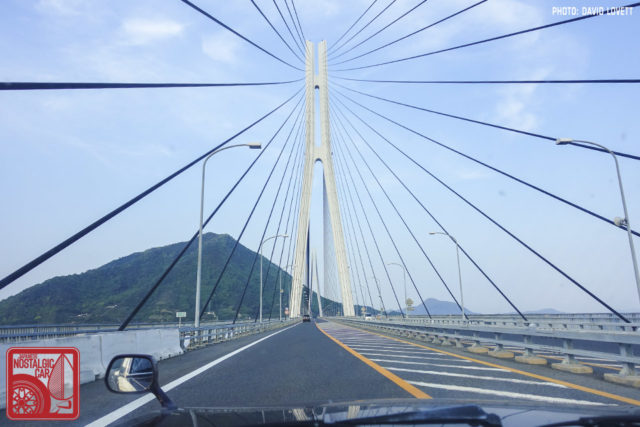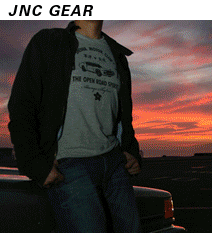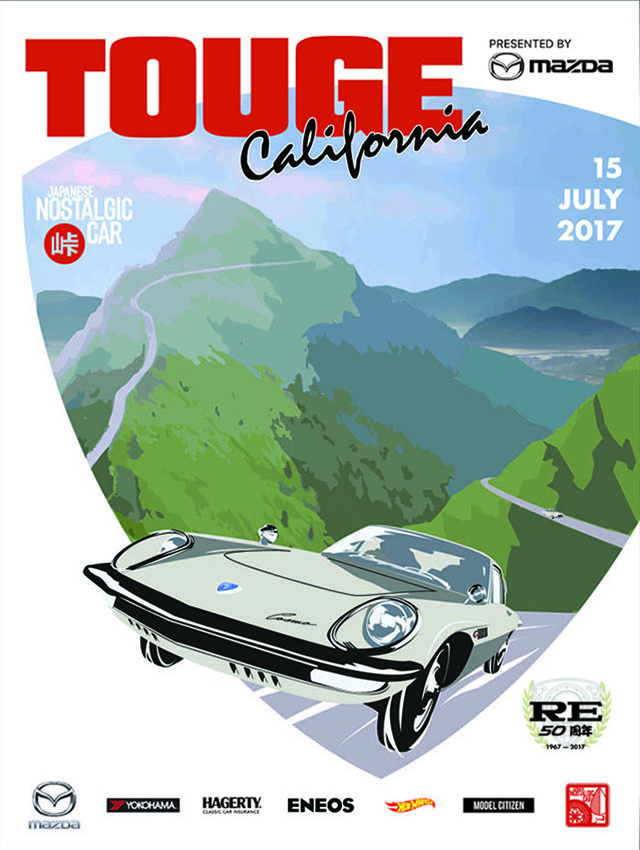Driving an old car for any distance can be a challenge. It’s not like hopping into a late model Camry with a cup of coffee and a bag of beef jerky and pointing that Toyota logo where you want to go. There’s aging parts, elevation changes, and comfort to consider.
What’s your best advice for a JNC road trip?
The most entertaining comment by next Monday will receive a prize. Scroll down to see the winner of last week’s QotW, “How should Japanese carmakers honor their history?”
Like many of us hope, Robb and dankan suggested the best way for carmakers to honor their history is by making new cars that have the spirit of their past successes, rather than let heritage models languish. r100guy and nlpnt offered better museums, perhaps in partnership with existing ones. Crank_case demanded old parts, and I think we can all get behind that. al took a unique stance on virtual museum, possibly in Gran Turismo-like game. Dutch 1960 suggested it is we, the owners, who are responsible. The winner this week, however, was dbdr, for his reference to the Svalbard seed vault.
Making sure at least one example of every car they’ve produced survives in perfect, fully original condition. I believe at least Nissan has done it to some degree with their collection hall. There are cars that are I believe are legitimately on the verge of total extinction, at least within Japan. Isuzu Geminett and Mitsubishi Tredia are two that come to mind.
Shouldn’t be a big job for any major carmaker to search for and buy between a few dozen and a few hundred (depending on manufacturer) old cars, restore them and store them in an air conditioned warehouse. Kind of like the Svalbard seed vault, but with cars.
Omedetou, your comment has earned you a set of decals from the JNC Shop!









Big Sur, California, Hwy 1
Bring spare parts. https://www.youtube.com/watch?v=Nm8CvIPr-YI&t=55s
Agree about bringing spare parts including a second set of wiper blades and lug nuts (recall that scene from A Christmas Story when the old man was changing the tire on the Oldsmobile)
Tires tires tires tires tires.
Don’t break down!
I’ve driven JNC’s long distance many times.
There are so many words of advice I could give in terms of things that will help you if you break down (AAA, full size spare, extra belts, etc) or things that would make your trip much more enjoyable (working AC, headunit with apple carplay/android auto, etc.)
But honestly, it comes down to this.
Drive the car you plan to take on the road trip as much as you can. Especially with classic Japanese cars, I’ve noticed the more you drive them, the more reliable they are. Just stay up to date on maintenance.
Right now I’m prepping a 1991 A70 Supra for a grand road trip across the US next year, I’ve taken it out of storage, and given it a new cooling system, new headgasket with studs, new engine gaskets, new transmission ecu, new tires, new rear end seals, new fuel system, new ignition system, new braking system, recharged the AC, and is getting a fresh interior out of a rusted out (but not sun-damaged) midwestern Supra. But the fact of the matter is, even with all that work done, I’d feel more at ease driving my AE86 GTS with 276k miles that has been driven multiple times per week its entire life, and just had things replaced as its needed them.
Same advice as on any old car; If it’s been a while, give it a tune up. Plugs, wires, points, condenser, check the cap and rotor for undue wear. If you have electronic ignition, carry a spare ignition module, if you have a carb, carry your adjustment screwdriver.
Drive your car regularly. It can be tempting to get the car out, give it a flurry of work, then hit the road, but a car that is driven on the regular will let you know when its not feeling well, and you can replace parts as they’re needed.
But stuff happens. In the states, at least, make sure you have a AAA membership before you go; The peace of mind is worth it, and a lot of motor lodging does still give AAA discounts. The membership can pay for itself if you play it correctly.
Plan your route ahead of time. In the modern era, it’s possible to see where roads are closed, construction is happening, etc. It’s no fun to have to pull out a probably outdated pwper map and try to plan around a bridge closure or the like. And most of our cars are manual, and/or have no place to keep a cellphone, so GPS maps are not as viable as they would be in a car that has a place to put the phone, an outlet to charge the phone, etc.
Depending on the age of your car, it may not be very happy jumping on the freeway and going 70 all day. But regardless of the age of your car, you won’t be. Plan a route using the B roads and surface streets; In the states, at least, plan your route using the old US Highway system; Most map programs can be set to avoid freeways. If you do this, be prepared to take breaks; You’re not going to be getting to your destination as fast, but you’ll have more fun doing it, and you’ll see more interesting things than if you’re on the interstate freeway.
Finally, start the trip with the mentality that this is a journey; Your destination is secondary. The purpose of a road trip is to see the land, spend time with your car, and get some wheel time. Keep this in mind to avoid getting frustrated with lights, traffic, and the like. Remember to enjoy the drive, not endure it.
This might be advise for myself if I ever decide to do a road trip from one end to another in Japan: don’t stop and photograph every rusty unicorn parked next to the road or hidden in the shrubbery!
This may sound odd, but I have a “thing” for decaying cars. For us Dutch it’s unbelievable that you would leave a car parked next to the road rusting away till the iron has become one again with the soil beneath it. It’s difficult for me to comprehend that you rather park your car and watch it turn into mould than to pass it on to someone who can appreciate and use it. It’s one of the reasons I follow Youtube channels like Wasabi Cars and Mocking69.
So knowing I have a “thing” for rusty old cars, I would probably stop every 10 kilometers (6 miles), hop out of the car, take lot’s of pictures, hop into the car again and drive on. I probably never make it to the other side of Japan in time and miss my flight home. Oh well, there are much worse things that can happen. 😉
Best advice for a rad trip with a JNC would be the same as a road trip with any other car. Do a tune up and make the car happy to be running, ensure that your brakes,wipers, lights, tires and wheel bearings are in good shape. Next make sure you have a spare tire, jack and tools to change it if needed. Bring a set of jumper cables and know how to use them. Don’t forget your cell phone, be sure to bring some cash and coins for tolls and parking. Never underestimate the value of a playlist, a working radio, and the all important aux cable.
But what you really need for a JNC in particular would be time and an open mind. Don’t give yourself a deadline to be anywhere important beyond where your sleeping if its an overnight trip. Realize that the journey is just as important (if not more so) than the destination. Plan a route that allows you to stop and take pictures with backdrops you don’t normally get, to enjoy the road, and eat at places where you can see your car from the table. If you can mange to meet up with others that have JNCs all the better as you can convoy for a bit, play cat n mouse, or getting those elusive rolling shots.
We all keep JNCs so that we can enjoy them and the road trip is one of the many ways we can do so. So have fun, get lost, take the route less traveled, and enjoy the adventure.